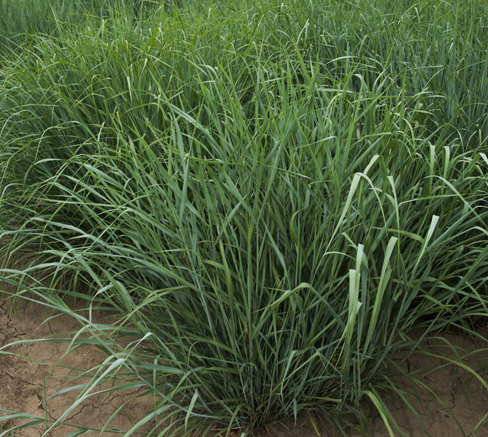Switchgrass
Switchgrass (Panicum virgatum) is a tall-growing, warm-season, perennial bunchgrass native to portions of Kentucky. Once a major component of the Midwestern prairies, switchgrass stands have dwindled as natural grasslands have given way to expanding farms and developments. There has been interest in recent years in re-establishing switchgrass. It is currently most widely recommended for soil and wildlife conservation uses, but switchgrass can also be used to provide mid-summer grazing in pasture systems for beef cattle. In addition, switchgrass is being researched as a potential biomass crop to produce energy. Switchgrass showes promise as a dual-purpose crop; it can be cut/grazed as a forage early in the season and harvested for biomass in late fall.
Marketing
Switchgrass is still in the research and development phase in Kentucky. While this crop holds promise as an alternative energy source, there currently are no existing biomass markets for switchgrass in the Commonwealth. Chariton Valley in Southern Iowa and Gadsden in Alabama, where switchgrass is being used at electricity-generating power plants, are currently the nearest markets. At present, co-firing with coal appears to offer the most realistic potential use of switchgrass for bioenergy in Kentucky. UK researchers have been involved in a co-firing project in which switchgrass was used to supplement coal for electricity production. A number of growers in the vicinity of the Maysville generating plant participated in the study. Researchers are examined cropping systems, analyzed plant composition, considered sustainability, determined net energy output, and evaluated the economics of switchgrass production for biomass. The possibility of compressing switchgrass into fuel pellets for thermal energy production was also examined in UK studies. In addition to the co-firing study, UK is conducting research on the potential of switchgrass for ethanol production. The conversion of switchgrass to ethanol is a complicated process requiring a biorefinery. While Kentucky does not have one, several states, including Tennessee and Georgia, are building pilot- scale biorefineries.
Production

There are two types of switchgrass (upland and lowland), with many cultivars within each type. While cultivars of both types can be grown in this region, better adaptability and higher yield potential have made lowland cultivars the main focus of UK biomass research. Upland varieties are desirable when switchgrass is grown as a dual-purpose crop for both forage and biomass. Switchgrass can be grown on marginal land and is adaptable to a variety of soil types. It is most productive, however, when grown on moderately well to well-drained sites of medium fertility. Freshly harvested seed has a low germination rate and must be treated to break dormancy.

